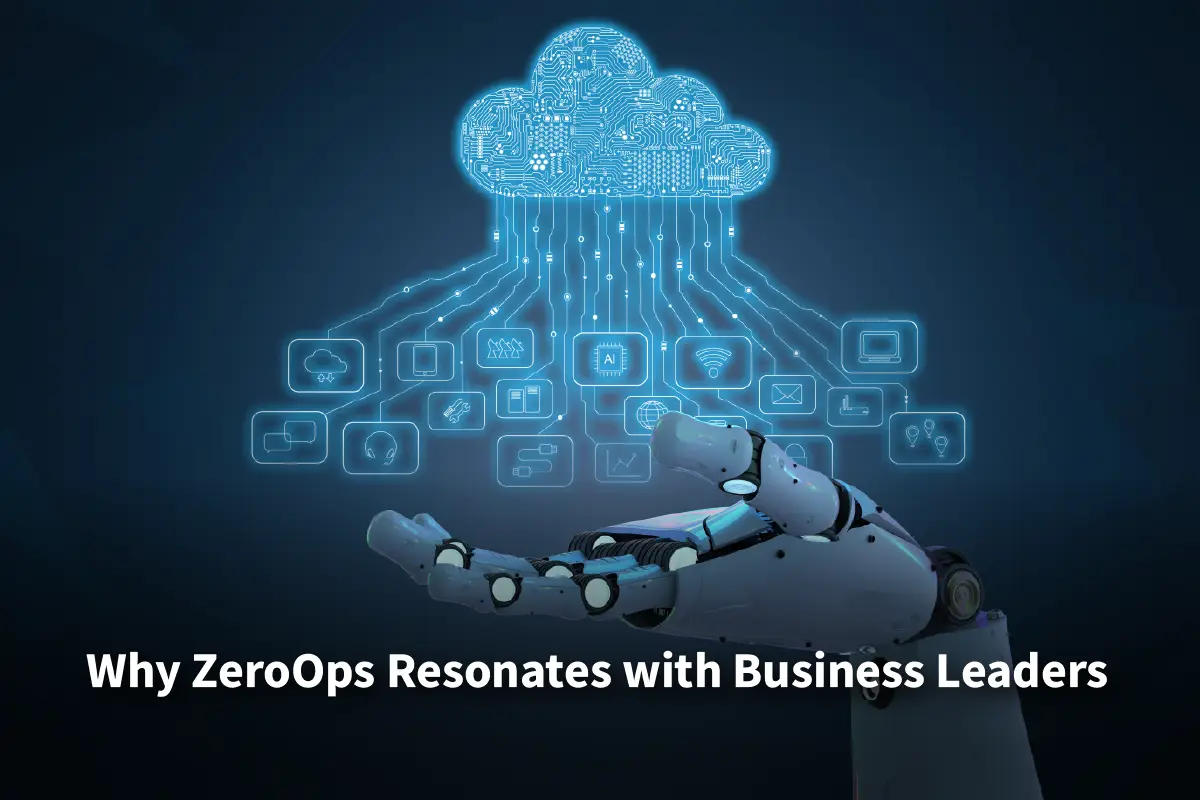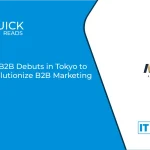The IT industry has and is evolving. We used to seek faster servers and bigger data centers. A new idea excites the boardroom: IT operations that run smoothly and efficiently, needing little human support. Meet ‘ZeroOps,’ a smart concept for a tech system that manages and heals itself. It’s fully autonomous. It offers relief from rising costs, skills shortages, and the emergencies that stress IT teams. As business leaders in a hype-filled world, we should ask: Is a no-code, fully autonomous IT future real, or just an illusion?
Defining the ZeroOps Ambition
ZeroOps isn’t a single product or a sudden revolution. Think of it as the aspirational end state on a continuum of automation and abstraction. It represents an environment where:
- Self-Managing Infrastructure: It automatically handles provisioning, scaling, patching, and optimization. This all happens through policy and AI, not through manual tickets. In fact, Red Hat reports that automation has reduced manual IT tickets by 30%, saving millions annually.
- Self-healing Applications: They spot problems, find the causes, and fix them. Users won’t notice any issues. IBM’s AI Global Adoption Index found that 44% of organizations are embedding AI into their current apps and processes.
- Easy App Development: Low-code and no-code platforms help business users and developers create and launch apps with ease. They don’t require deep technical skills. Gartner predicts that by 2025, 70% of new apps will be built using low-code or no-code technologies, up from less than 25% in 2020.
- Operational Overhead Nears Zero: Monitoring, maintenance, and manual tasks are greatly cut down. This lets IT teams focus more on innovation.
This goal builds on years of progress.
It includes:
- Standardizing virtualization
- Using cloud computing for agility
- Leveraging DevOps pipelines for automation
- Gaining predictive insights from AIOps
Netflix and Spotify demonstrate what strong, automated platforms can do.
Also Read: Soft Robots in Precision Manufacturing: Japan’s Competitive Edge
Why ZeroOps Resonates with Business Leaders

The appeal is undeniable and rooted in tangible business pain points. Consider the relentless pressure of digital transformation. Every new initiative demands robust, scalable, and secure IT underpinnings. Finding and keeping skilled IT operations talent is a big challenge. This issue keeps pushing costs higher. In the European Union alone, a shortfall of 756,000 skilled IT professionals is expected in the near term.
Managing large hybrid and multi-cloud environments is complex. ZeroOps helps by cutting costs and speeding up digital product launches. It bridges skills gaps with automation. This boosts reliability, leading to better customer experiences. Also, it frees up IT resources so they can focus on strategic innovation instead of daily tasks. It’s a strong value offer for leaders who want efficiency and a competitive edge.
The Persistent Need for Human Oversight
However, the path to true ZeroOps is fraught with caveats. Declaring the era of ‘no humans needed’ is profoundly premature and potentially dangerous. Here’s why:
- The Myth of ‘No-Code’ Simplicity: Low-code and no-code platforms simplify development. Still, complex enterprise apps usually don’t operate alone. They integrate with legacy systems, handle sensitive data, and require sophisticated logic. Business users can’t realistically build secure, scalable applications by themselves. They can’t build complex components without some technical help or coding skills. These platforms assist users. However, they still require governance, security skills, and performance engineering. Forrester notes that 84% of businesses already use low-code or no-code to mitigate developer shortages.
- Autonomy ≠ Abdication: Autonomous systems operate based on defined policies, machine learning models trained on historical data, and pre-programmed responses. Who defines those policies? Who ensures the training data is unbiased and comprehensive? Who steps in when the system faces a new, unexpected event, a ‘black swan’? AI can make mistakes, sometimes spectacularly and counter-intuitively. Human oversight, strategic direction, and the ability to interpret context remain irreplaceable. Think of it as shifting from hands-on steering to being a pilot. You’ll monitor advanced autopilot systems instead.
- Complexity doesn’t go away; it transforms: ZeroOps hides some complexity but introduces new, unseen layers. Managing orchestrators, policy engines, AI models, and system integrations is a new challenge. This requires a new skill set. It should focus on governance, AI ethics, data quality, and system design.
- Security and Compliance Imperatives: Cybersecurity threats evolve at breakneck speed. Autonomous systems, if compromised or poorly configured, can amplify risks exponentially. You need human judgment to keep up with changing rules in regulated industries. Careful interpretation helps ensure compliance. Also, audit trails must be more detailed than just automated reports. Security can’t just rely on algorithms. It needs human watchfulness and smart risk assessment.
- Vendor Landscape: Promises vs. Deliverables: Many vendors quickly add the ‘ZeroOps’ label to their products. Scrutiny is essential. Does their solution truly offer autonomous healing, or just better alerts? Does their ‘no-code’ platform handle real-world enterprise complexity, or just simple workflows? True autonomy needs advanced AI, strong integration skills, and reliable resilience. These features are still developing in many products. A major financial services firm faced a tough lesson. They tried an ‘autonomous’ database solution. But they soon realized they still needed skilled DBAs for performance tuning and disaster recovery. Unfortunately, they didn’t have that expertise in-house.
Navigating the Journey
So, does this mean ZeroOps is a fantasy? Not at all. It shows a strong path ahead. In the future, IT operations will be much more efficient and smarter. The key is pragmatic adoption:
- Embrace ZeroOps to boost your IT team: Focus on adding value, not cutting resources. The goal isn’t to remove people. It’s to remove toil. This means getting rid of repetitive, low-value tasks that waste resources. This lets your skilled team tackle big problems, be creative, and form strategic partnerships. View it as elevating the role of IT, not erasing it.
- Start with Foundations and Measured Steps: You cannot leapfrog to autonomy. Key requirements are strong cloud adoption and solid infrastructure-as-code practices. Advanced DevOps pipelines are also essential. Begin by automating simple tasks. These include provisioning, patching, and basic remediation. Measure the results, learn, and incrementally expand scope. A global retailer saved a lot by automating their cloud resource scaling. They did this before handling the more complex application deployment workflows.
- Invest in Upskilling Strategically: The skills needed are changing.
Focus on training in:
-
- Cloud architecture
- Data science basics
- AI/ML concepts
- Security automation
- Platform engineering
Foster a culture of continuous learning. Your future IT team must design, oversee, and ethically manage autonomous systems. Manual configuration is not enough.
- Demand Transparency and Control from Vendors: Scrutinize vendor claims. Ask for demonstrable proof of autonomous capabilities. Insist on clear visibility into how decisions are made by AI systems (explainability). Ensure you retain ultimate control and override capabilities. Understand the limits of their ‘no-code’ environments and the integration effort required.
- Double Down on Governance and Security: As autonomy increases, so must governance. Define clear policies for autonomous actions. Implement rigorous monitoring specifically for the behavior of your autonomous systems. Integrate security and compliance checks into all automated workflows and decision points. Make security a first-class citizen in your ZeroOps architecture from day one.
- Manage Expectations Relentlessly: Communicate clearly within your organization. ZeroOps is a journey measured in years, not quarters. It brings great value by steadily improving efficiency, not by quickly getting rid of the IT department. Set realistic goals and celebrate milestones along the way.
A Future of Radical Efficiency, Not Absence

The future of IT is changing fast. Key forces are driving this change: constant automation, advanced AI, and platform abstraction. ZeroOps is a useful banner for this transformative wave. The idea of a fully ‘no-code, fully autonomous’ IT world feels like science fiction. It’s not a practical choice for complex businesses yet.
The achievable and valuable future is one of Radically Simplified Operations. In the future, low-code tools help speed up development. AIOps offers smart insights and automates responses. Cloud platforms manage large-scale heavy tasks efficiently. Human ingenuity moves from manual setup and problem-solving to strategic planning.
It focuses on three main areas:
- Governing intelligent systems
- Ensuring ethical AI use
- Managing complex integrations
- Driving innovation
These efforts leverage powerful new capabilities.
For business leaders, the imperative is clear: Embrace the direction of ZeroOps. Invest boldly in automation, AI, and platform abstraction. This will boost efficiency and agility like never before. But do so with eyes wide open. Recognize the enduring need for skilled human oversight, robust governance, and strategic management. The goal is not to remove IT. Instead, it’s to elevate IT to its best potential. This means using smart automation to boost performance. By doing so, we free up human talent. They can then focus on building the next wave of competitive advantage. The future isn’t about ZeroOps meaning no people. It’s all about saving effort, cutting out complexity, and avoiding downtime. That’s a future worth building, pragmatically and strategically.







